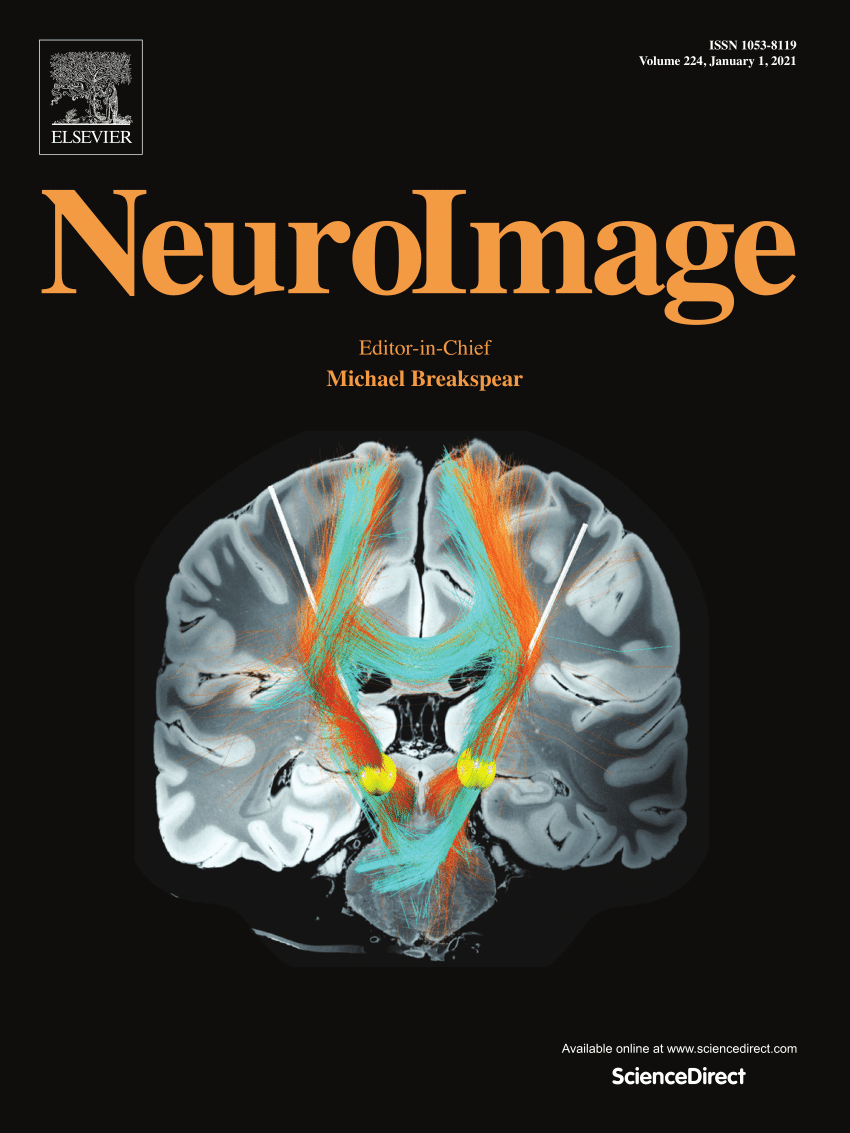The analyses of structural covariance and structural covariance similarity of cortical morphological measures
IF 4.7
2区 医学
Q1 NEUROIMAGING
引用次数: 0
Abstract
Structural covariance refers to the concurrent changes in one morphological measure between two brain regions. Structural covariance of cortical morphological measures such as cortical thickness (CT), surface area (SA), and cortical volume (CV) have been applied to identify brain structural differences between patients with neuropsychiatric disorders and healthy controls. However, the precise relationships between structural covariance patterns of different cortical measures remain largely unknown. Here, we optimized the preprocessing and calculation approaches of structural covariances and investigated both global (whole-brain-level) and regional (brain-region-level) structural covariance similarities between CT, SA, and CV in 35,580 individuals. We found that Pearson correlation outperformed partial correlation due to generating fewer negative correlations of uncertain biological significance and principal component regression outperformed the regressions of total intracranial volume and respective global measures in removing global effects and reducing negative correlations. We observed that both global and regional covariance similarities of SA-CV were much higher than those of CT-CV and CT-SA, although they were influenced by the selection of atlases and covariance values. We also found age and sex effects on structural covariances and age effects on covariance similarities. The higher SA-CV covariance similarities than CT-CV indicates that SA contributes more to CV covariance than CT, although CV is derived from both CT and SA. The lack of CT-SA covariance similarities suggests that CT and SA have different covariance patterns and should be used in combination in structural covariance studies.
皮层形态测量的结构协方差和结构协方差相似性分析。
结构协方差是指两个脑区在一种形态测量上同时发生的变化。皮质形态学测量的结构协方差,如皮质厚度(CT)、表面积(SA)和皮质体积(CV),已被用于识别神经精神疾病患者和健康对照者之间的大脑结构差异。然而,不同皮质测量的结构协方差模式之间的确切关系在很大程度上仍然未知。在此,我们优化了结构协方差的预处理和计算方法,并研究了35,580个个体的CT、SA和CV之间的整体(全脑水平)和区域(脑区域水平)结构协方差相似性。我们发现Pearson相关优于偏相关,因为产生的不确定生物学意义的负相关更少;主成分回归在消除整体影响和减少负相关方面优于颅内总容量和各自的全局措施的回归。我们发现,尽管SA-CV的全局和区域协方差相似性受到地图集选择和协方差值的影响,但SA-CV的全局和区域协方差相似性都远高于CT-CV和CT-SA。我们还发现年龄和性别对结构协方差的影响以及年龄对协方差相似性的影响。SA-CV协方差相似性高于CT-CV,表明SA对CV协方差的贡献大于CT,尽管CV同时来源于CT和SA。CT-SA协方差相似性的缺失提示CT和SA具有不同的协方差模式,应在结构协方差研究中联合使用。
本文章由计算机程序翻译,如有差异,请以英文原文为准。
求助全文
约1分钟内获得全文
求助全文
来源期刊

NeuroImage
医学-核医学
CiteScore
11.30
自引率
10.50%
发文量
809
审稿时长
63 days
期刊介绍:
NeuroImage, a Journal of Brain Function provides a vehicle for communicating important advances in acquiring, analyzing, and modelling neuroimaging data and in applying these techniques to the study of structure-function and brain-behavior relationships. Though the emphasis is on the macroscopic level of human brain organization, meso-and microscopic neuroimaging across all species will be considered if informative for understanding the aforementioned relationships.
 求助内容:
求助内容: 应助结果提醒方式:
应助结果提醒方式:


